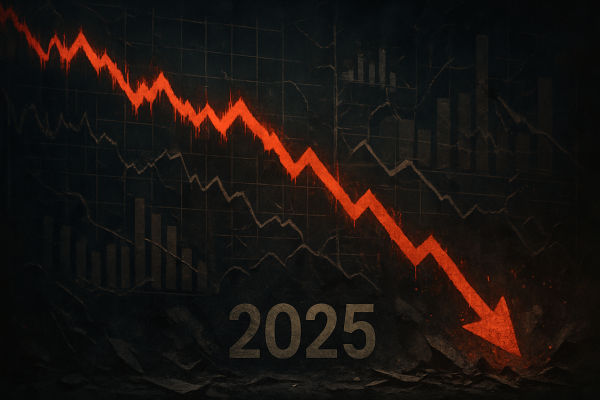Cliff style collapse is a term used to describe the rapid decline in
financial markets or specific asset prices in a short period of time. It refers
to an almost vertical decline in prices, as if falling from a cliff. This sharp
drop may be caused by various factors, such as large-scale selling pressure,
market panic, economic recession, political uncertainty, etc.

Cliff style plummeting usually occurs under the influence of intense
fluctuations in market sentiment, investor panic, or major events. This sudden
price drop may lead to market imbalances, a sharp slowdown in trading activity,
and even trigger a chain reaction, affecting the prices of other related
assets.
The typical cliff-like collapse in history occurred in 2008, also known as the "Wall Street Crash," which marked the beginning of the financial crisis. During that period, the US stock market suffered a lot. The landmark was that the US dow jones industrial average fell more than 25% in a row. In addition, the S&P 500 index fell sharply, falling more than 20% in a week, making it the first bear market in history.
The cliff style crash has had a widespread impact on financial markets and
investors. It may lead to a loss of wealth for investors, a decline in market
confidence, and even have a negative impact on the entire economy. In this
situation, regulatory agencies and governments usually take measures to
stabilize the market and mitigate the impact of market turbulence.
In the case of a steep drop in stocks, investors can consider adopting some
risk control strategies. For example, limiting the exposure of investment
portfolios, increasing cash ratios, reducing stock ratios in investment
portfolios, and adopting strategies to balance investment portfolios can reduce
investors' costs. In addition, investors can also adopt a short position
strategy to reduce the risk of investing in assets. Short position strategy
refers to investors selling assets in the event of a cliff like decline, and
then temporarily giving up investment until the market returns to calm before
investing again.
The emergence of a cliff like collapse reminds investors to pay attention to
market risks and adopt appropriate risk management strategies. For long-term
investors, rational decision-making, diversified investment portfolios, and
holding long-term value assets are effective methods to cope with cliff like
crashes, ensuring stable asset appreciation and avoiding excessive panic. At the
same time, it is also necessary to pay attention to changes in market dynamics,
economic indicators, and political events in order to make timely adjustments
and response strategies.
Disclaimer: Investment involves risk. The content of this article is not an investment advice and does not constitute any offer or solicitation to offer or recommendation of any investment product.



























